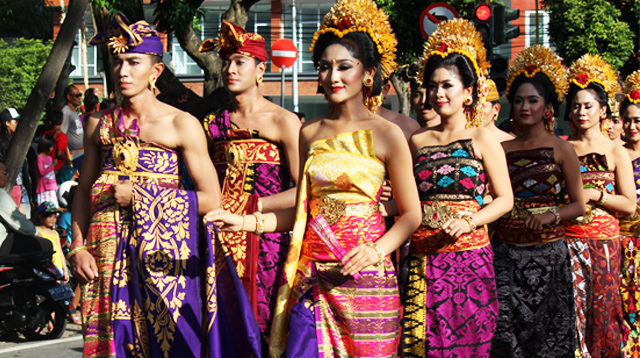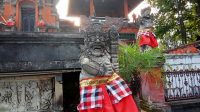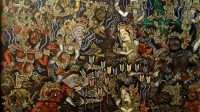SONGKET is a type of traditional woven clothes originating from the Malay family, including Bali (Indonesia). It looks very special and elegant because the material combines cotton thread and gold or silver thread.
This songket clothes are woven manually or using a non-machine loom (ATBM). Colorful cotton threads are perfectly combined with gold or silver threads in such a way as to create a brilliant sheen effect.
Motive
In terms of motifs, weavers tend to capture the natural beauty around their homes such as flora and fauna. Some even promote the uniqueness of local culture such as makepung or buffalo races in Jembrana (West Bali).
The presence of synthetic gold thread makes the price of a piece of songket much cheaper. Nevertheless, the best quality songket is still valued quite expensively as a masterpiece of art.
In Bali, there are several well-known songket weaving villages. Three of them are Pendem Village (Jembrana), Gelgel Village (Klungkung) and Sidemen Village (Karangasem). The artisan mostly take advantage the spare time of housewives after they complete their domestic works. So, they do not need to leave home when wishing to complet such a work.
Uses
By and large, Balinese people use it to attend official or manusa yadnya ceremony (life cycle rites) such as weddings, tooth filing or other special official events such as graduations on campus.
Apart from being used as a lower garment (sarong), songket clothes can also be used to make a number of handicrafts such as suits, bags, wallets, sandals, headdresses, cellphone pouches and scarves. Meanwhile, tere are also those who use it as wall decoration or framed interior ornaments.
From its history, the songket was originally a luxurious cloth of the nobles to characterize their nobility and dignity. But today, songket clothes have reached all levels of society because the price is getting affordable. It is inseparable from the strategy by setting price variant from cheap to expensive one in order to reach a wider market.
To preserve these traditional fabrics as ancestral heritage, the government carries out various forms of preservation such as Balinese clothing design competitions in accordance with the latest trends, trade shows and other ways. The more people who buy this cloth, the more artisans who are dominated by housewives in rural areas are helped economically.










